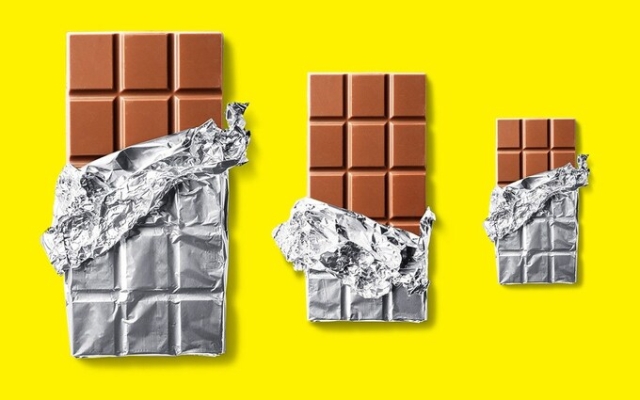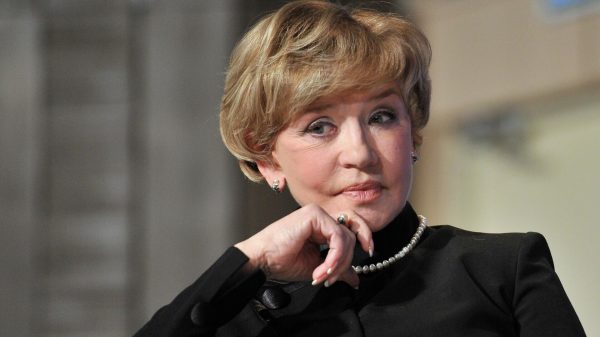
A wave of ministerial intervention is blunting Britain's sweet tooth as supermarkets are forced to hide confectionery, Haribo warned.
Customers are buying fewer sweets and chocolates after grocers were ordered to move them to the back of stores.
The company, which sells Starmix, Tangfastics and Maoam, said in financial documents that it has given up record sales last year were £218m, up £32m from 2021.
However, despite the rise in sales, Managing Director John Hughes warned that shoppers are cutting spending on the broader confectionery industry.
He said: «Major changes occurred in store layouts in the second half of the year as retailers prepared for new government restrictions on second-hand display of foods and drinks high in saturated fat, salt and sugar.»
«Combination of government restrictions, higher prices, and rising costs of living have contributed to lower category volumes.”
Supermarkets have been forced to move sweets and other foods high in saturated fat and saturated fat to the last places in their stores. year, as new regulations on junk food advertising were introduced as part of the government's fight against obesity.
The total consumption of sweets in the UK was unchanged from last year, while chocolate fell by 3. 2%, the company said. . The company added that combined sales of sweets and chocolate rose by 3 percent due to higher prices.
Customers are turning away from sweets and similar treats not only because of red tape and rising prices.
Eight out of ten shoppers are now worried about what Barclays calls «shrink inflation» and cookies. , chocolate, snack bars and chips were singled out as the food and beverage categories where products are most often getting smaller, but prices are rising or staying the same.
Bank report says 70 % of shoppers noticed examples of contraction in June, compared to 65% in May.
Food inflation
Nearly half of the shoppers surveyed found examples of contraction when shopping for chocolate, and 42% said they noticed it when shopping for chips. A total of 37% said they saw shrinkage in the cookie aisle and 32% in the snack bar.
This has resulted in almost a third of shoppers less likely to buy their favorite foods or switch to brands they haven't used before . the report says they have reduced their production.
The practice of squeezing has become commonplace as food and beverage manufacturers scramble to cover the high cost of everything from ingredients to wages and energy.
Confectionery industry consultant Andy Baxendale said: “[Cocoa] is currently the highest the price for 26 years… that's just ridiculous.
“There's a whole storm of things going on right now. It just makes it incredibly expensive for chocolate. So you can make an expensive product or you can make a product for the same price for less, which is basically what everyone does.”
Twix, Magnum, Cadbury Dairy Milk, Mini Cheddars are just a few of the brands that have reduced portions of certain products over the past year.
Andrew Thompson, food & Beverage consultancy Sentinel said: “The cost of raw materials makes up the majority of the total cost of a product. If you're selling millions and millions of these units a day… then you're making a half gram change, and that's fundamental.»
1706 What constitutes inflation
Barclays says consumer card spending rose 5.4% year-on-year in June from 3.6% in May as consumers shopped for summer clothes and hit pubs and bars. However, restaurant spending fell 8.2%.
Esme Harwood, director of Barclays, said: “Pubs & bars have benefited from Brits soaking up the sun in beer gardens, while butchers and garden centers have experienced a surge thanks to the onset of barbecue season.
“Even clothing retailers, which have struggled since the start of the cost-of-living crisis, are back up as consumers took advantage of the heat to refresh their summer wardrobe.”
Selected data from the UK. The Retail Consortium (BRC) reported that retail sales rose 4.9% in June after warmer temperatures led to more shoppers spending on sunscreen and summer clothing.
Shopper Confidence Index The IGD, which was released alongside the BRC figures, showed that consumers are now more positive about their food spending, with 30% of shoppers expecting food prices to stay the same or fall this year.
That's up 16% from the start of the year.
However, IGD's Sarah Bradbury said the UK hasn't come out of the woods with rising mortgage rates and pressure on households. budgets.
About 60% of people with mortgages or renters expect they will have to cut their spending even further to make up for rising mortgage costs. This is 46% more than in March.


























































Свежие комментарии